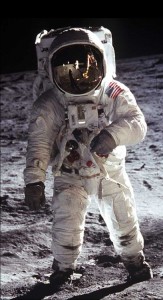
How many times have you heard the expression, “Everyone’s got at least one book in them”? In non-fiction terms, I believe that everyone has—as long as they’re old, crazy, or experienced enough to have had some life experience. Of course fiction is a different story. You only need a vivid imagination. Well, along with a bucket load of passion, discipline and an awesome plot—hmm, quite a lot really.
Swinging back to non-fiction, because that’s what I mostly deal with, I’d like to tell you a little story about how the most unlikely people have the most fascinating tales to tell. But, before I do that, I’d like to ask you to think about the people we come across in our daily lives. Do they have stories to tell? How about the old security guard who checks your pass every day—ex SAS commando maybe? And the cab driver who drove you to the airport this morning—could he be a screenwriter or novelist, or a refugee with a harrowing story of loss and survival? I’ve heard one of those bios and it was only because I asked the right questions.

The other day I listened to part of an interview on the radio. It referred to the art of studied indifference, an art in which the speaker claimed New York subway users took top prize. In my experience, she was right. Take the London tube, or the Paris metro, in the evening (Friday nights are good) and almost every trip will be highlighted by an event. And it doesn’t matter whether it’s disgusting, hilarious, poignant, or plain daft, everyone will be openly scoping it out, if not joining in.
However, take the same event and repeat it on the NY subway and you’ll see scores of people continue to (pretend to) read, stare studiously into the middle distance, feign sleep, push their iWhatevers deeper into their heads and do everything possible not to acknowledge what’s happening around them.

As I was listening to this story, I was reminded of an evening some twenty years ago. I was staying at a smart, upmarket guest house in Tasmania where the hosts had a very agreeable policy of lumping all the guests together for dinner at the same large, round table. They had the only restaurant for miles, so if you didn’t want room service—that was it.
We were a merry bunch; getting very loud and boisterous as the wine flowed, nicely encouraged by the fact that nobody had to drive. As the night wore on, I noticed a more elderly couple who weren’t joining in the banality, and decided late in the piece to have a slurred sort of chat.
I had about ten minutes before they left, and it turned out to be one of the shortest ten minutes of my life. The couple—from the US—were both retired physicists who had worked right alongside Robert Oppenheimer to develop the atomic bomb. Horrified after the blasts at Hiroshima and Nagasaki, they’d migrated to NASA where they’d been directly involved in the Apollo manned moon landings and a bunch of other fascinating stuff.

The next morning I hurried downstairs to the dining room hoping to catch a little more of their story, but I was too late. The couple had left for a hike at first light. I’ve thought about them many times since and would like to thank them publicly in this blog for that brief window into their extraordinary lives. I’ve no doubt that fleeting meeting went a long way to developing the intense interest I have in people today.
Amazing who’s sitting right next to you, isn’t it?
